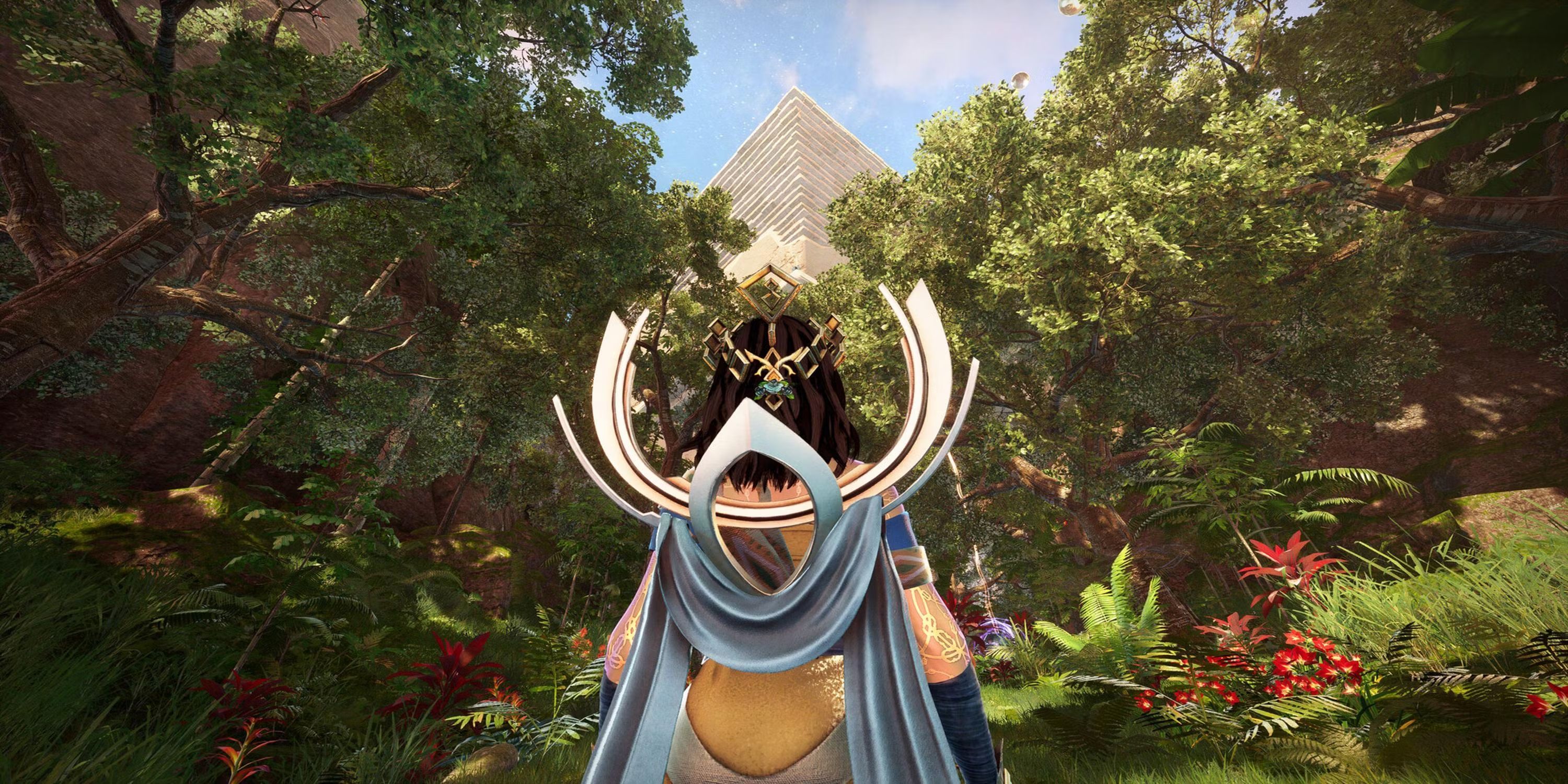Best Open-World Games That Are Giant Escape Rooms
Description

Summary
- Some games create intimate open worlds that test players with puzzles as the main gameplay mechanic.
- Solutions in these puzzle games are often about understanding rather than simply finding a key.
- Games like Quern, Prey, and The Witness challenge players’ intelligence, patience, and ability to think sideways.
Open worlds usually mean sprawling cities, fast travel, and endless side quests, but sometimes, they shrink inward and turn into something far more intimate. These are the games that lock players in a world that constantly asks, “How are you getting out?” Instead of going from point A to B with a checklist, they’re decoding ancient languages, navigating alien logic, and treating the world itself like one massive, interconnected riddle.
These aren’t just open-world games with puzzles in them. These are puzzles that are games, and the solutions aren’t always about finding a key. Sometimes, they’re about finding understanding.
6
Quern: Undying Thoughts
This Isn’t Myst. But It Really Wants To Be
Even though Quern: Undying Thoughts is a love letter to Myst, it differentiates itself enough to have its own unique charm. Instead of separating its puzzles into isolated areas, it lets them bleed into each other like ink on parchment. Players awaken on a mysterious island with nothing but a locked gateway and a notebook, and from there, the escape room logic kicks in. There are no traditional HUDs or quest markers. The only guidance is environmental, and progress means paying attention to symbols, architecture, and strange mechanical contraptions that seem decorative until they start spinning.
It plays with expectation in clever ways. Sometimes, solving a puzzle will open a door. Other times, it will unlock a seemingly unrelated area that won’t make sense until hours later. The entire island feels like it was built by someone who wanted to test not just a person’s intelligence, but their patience and ability to think sideways. The deeper players go, the more they realize that everything, from the shape of a bridge to the number of statues in a garden, might be part of a larger solution still waiting to click into place.
5
Prey
The Spaceship Isn’t Broken, It’s Just Smarter Than You
Prey is a sci-fi horror game that pretends to be an immersive sim but is actually one big locked room. The Talos 1 space station is a single, interconnected location with no load screens, where every locked office, vent, and decontamination chamber is a potential puzzle with multiple solutions. Want to sneak past a turret? Mimic a coffee cup. Can’t get through a broken door? Loop around, use a GLOO Cannon to create a staircase, or rewire the electronics from the other side.
What makes Prey stand out is how it never tells players which option is “correct.” Everything, from hacking minigames to environmental manipulation, feels like a tool in a larger escape room kit. There are multiple keycards and security terminals to find, sure, but even they can be bypassed if players are clever enough. Talos 1 is basically a Rubik’s Cube with aliens in it, and every time a player solves one of its logic knots, it reminds them that nothing is truly locked if they’re willing to bend the rules.
4
The Talos Principle
Robots, Religion, And Really Smart Mazes
The entire open-world structure of The Talos Principle is built around three philosophical questions: what is consciousness, what is freedom, and what to do when a turret is blocking the puzzle exit? The world is divided into distinct biomes filled with test chambers, but the layout encourages nonlinear exploration. Players can skip puzzles, come back to them later, or even find secrets that challenge the rules of the game’s logic entirely.
The puzzles themselves are elegant nightmare fuel. Jammers, laser redirectors, time clones, and other tools all have to be used with surgical precision, but the real kicker is that the world feels like it was left behind for someone smarter to figure out. There’s a quiet horror to wandering an overgrown temple filled with puzzles and hearing a disembodied voice quote Milton and question the player’s identity as a machine. It’s one of the only games where finishing a puzzle makes players feel smart and existentially unnerved at the same time.
3
Islands Of Insight
Puzzles Don’t Have To Be Hard, Just Endless
Islands of Insight is what happens when someone says, “What if an MMO were a giant escape room?” and then actually built it. Players are dropped into a floating, ancient-futuristic world made of ruins, crystal towers, and temples, and then tasked with solving puzzle after puzzle, with hundreds of different types sprawled across the map like puzzle litter. Some are simple perspective tricks, others involve multi-stage logic chains that would make a professor sweat.
What’s unique about Islands of Insight is its scope. The world is massive, but every part of it feels handcrafted to hide puzzles, not filler. There are no combat mechanics, and progression is entirely based on problem-solving, which makes movement itself feel like a form of thinking. Puzzle fans don’t just explore. They scour. They look at a cliff and wonder if that suspicious pattern of flowers is hiding a sigil, or if that strange humming sound is part of an audio puzzle hiding three zones away.
2
The Witness
The Island Isn’t Just Watching, It’s Listening
The Witness looks like a minimalist walking simulator at first glance, but it’s secretly one of the most brain-melting open-world logic tests ever built. Every inch of its island is covered in panels with maze puzzles built into them, and those panels start off simple before evolving into optical illusions, environmental mimicry, and even sound-based sequencing. The moment players realize the sun’s reflection on the water is part of a solution, the game clicks into a completely different gear.
There’s no combat, no dialogue, and no reward other than the satisfaction of suddenly understanding something that made no sense five hours ago. The entire island is like a museum designed by a trickster god with a grid fetish. Some puzzles only reveal themselves if the player is standing in a specific spot at a specific angle, while others require them to carry the solution in their head across half the island. No one forgets their first time solving a door using shadows from trees that don’t even look important until they are.
1
Outer Wilds
Why Build A Door When You Can Lock The Whole Planet?
Outer Wilds doesn’t ask players to solve a mystery. It just drops them into one and expects them to want to solve it. The solar system is trapped in a 22-minute time loop, with a sun that dies and a universe that resets every time it goes supernova. There’s no inventory, no quest markers, and not a single skill tree in sight. Just a spaceship, a translator, and the terrifying realization that the entire world is built like a recursive lockbox.
What makes Outer Wilds feel like a giant escape room isn’t just the non-linear structure; it’s the way knowledge is the only key that matters. Solving a puzzle on the Hourglass Twins might unlock the reason for the Ash Twin Project, which in turn recontextualizes everything about the White Hole Station. It’s pure cause-and-effect brain gymnastics. Even the smallest detail, like the color of a trail or a fragment of alien poetry, might be the final piece to the one puzzle players didn’t even know they were working on.




